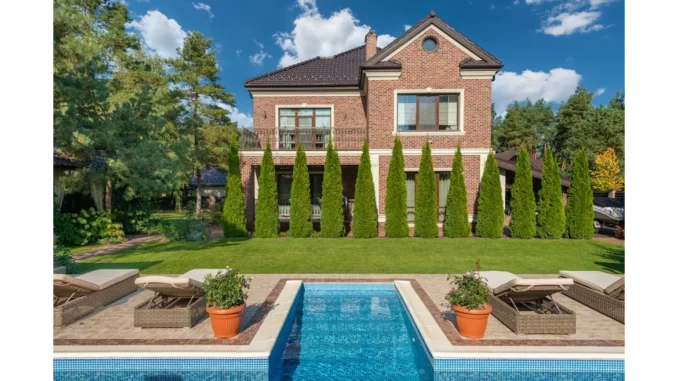
The Art of Garden Design: Harnessing Light, Shade, and Patterns for a Captivating Outdoor Space
Garden design, a sophisticated art form, meticulously blends various elements to craft a harmonious and aesthetically pleasing outdoor sanctuary. Among the most potent tools in a garden designer’s repertoire is the dynamic interplay of light and shade. This element can metamorphose an ordinary garden into an enchanting oasis, stirring emotions and crafting an identity that resonates with onlookers throughout the garden’s lifecycle.
The Transformative Power of Light and Shade
Light and shade are indispensable in garden design, profoundly influencing the garden’s ambiance and mood. Natural light, in particular, accentuates the beauty of plants, flowers, and other garden features. However, relying solely on natural light can be challenging, especially in gardens with limited sunlight or regions plagued by erratic weather patterns. This is where the strategic use of artificial lighting becomes essential.
Artificial lighting can be skillfully positioned to enhance the garden’s visual allure and create mesmerizing effects. For instance, uplighting can spotlight the architectural splendour of trees and shrubs, casting intriguing shadows on the ground. Pathway lights can guide visitors through the garden, imparting a sense of direction and elegance. Additionally, string lights and lanterns draped from pergolas or trees can cultivate a warm and inviting atmosphere for evening gatherings.
Textures: Adding Visual Intrigue
Textures play a pivotal role in garden design, offering visual allure and depth. By integrating a variety of textures through different plants and shrubs, designers can infuse the garden with interest. For example, juxtaposing the soft, feathery foliage of ferns with the rough, spiky leaves of succulents creates a striking contrast that captivates the eye. Textures can also be introduced through hardscape elements like gravel, mulch, and stone pathways, providing a tactile experience for visitors as they navigate the garden.
Forms: Creating Rhythm and Movement
A garden devoid of definitive forms can lose its identity and appear monotonous. To instill rhythm and movement, designers often employ one form or a blend of multiple forms. Circular gardens, for instance, add an element of surprise and obscure the garden’s predictable shape. Circular beds, patios, and pathways can be overlapped to craft a visually stunning space that encourages the eye to traverse the garden. These patterns should be meticulously planned and sketched before implementation. Using a compass to define shapes and pairing circles in various forms and styles can help achieve the desired effect.
Rectangular themes are perhaps the most popular and widely embraced in garden design. They are particularly effective for creating formal gardens and can be seamlessly adapted to long or narrow spaces. By dividing the garden into even sections, designers can establish a sense of order and symmetry. Raised plant beds, pergolas, concrete pathways, and water features can be incorporated into a rectangular design to add structure and visual intrigue. Additionally, recreation and dining areas can be strategically placed to create functional spaces for relaxation and socializing.
Proportion: Achieving Visual Harmony
Proportion is a fundamental aspect of garden design, referring to the relationship between different objects in the garden and their relative scale. Intelligent scaling is crucial for creating a balanced and harmonious garden. For instance, a large tree should be balanced with smaller shrubs and ground cover plants to establish a sense of proportion. Similarly, a tall pergola should be complemented with lower seating areas and planters to maintain visual equilibrium.
Patterns: Crafting Captivating Designs
Patterns are integral to garden design, adding structure, rhythm, and interest. By combining plants with varying textures and colours, designers can create visually appealing patterns that add depth and intrigue. For example, pairing the smooth, glossy leaves of hostas with the delicate, lacy foliage of ferns can create a captivating contrast. Similarly, using plants with contrasting colours, such as purple and yellow, can produce a vibrant and eye-catching display.
Balance: Striking the Right Chord
Balance is a cornerstone of garden design, achievable through both symmetrical and asymmetrical arrangements. Symmetrical balance involves placing elements evenly on either side of a central axis, fostering a sense of order and stability. Asymmetrical balance, conversely, entails arranging elements to create visual equilibrium without being identical on both sides. This type of balance can imbue the garden with a dynamic and organic feel, making it more engaging and interesting.
Simplicity: Embracing Elegance
Simplicity is paramount in garden design, particularly when striving for unity in the overall composition. Each element in the garden should contribute to a sense of harmony and coherence. Avoiding clutter and unnecessary embellishments can help create a clean and elegant design. Instead, focus on a few key elements that complement the garden’s overall theme and work well together.
Repetition: Creating Continuity
Repetition is a powerful design tool that can create rhythm and prevent monotony in the garden. By repeating certain elements, such as plants, colours, or textures, designers can establish a sense of continuity and cohesion. For example, repeating a particular type of plant throughout the garden can create a unifying theme. Similarly, using a consistent colour palette can tie different areas of the garden together, creating a harmonious and visually pleasing composition.
By thoughtfully considering and incorporating elements such as light and shade, textures, forms, proportions, patterns, balance, simplicity, and repetition, designers can create captivating and harmonious gardens. These spaces not only evoke emotions but also leave a lasting impression on visitors. Whether using natural light or artificial fixtures, combining different textures and forms, or employing patterns and repetition, each element plays a crucial role in crafting a garden that is both visually appealing and functional.


Be the first to comment